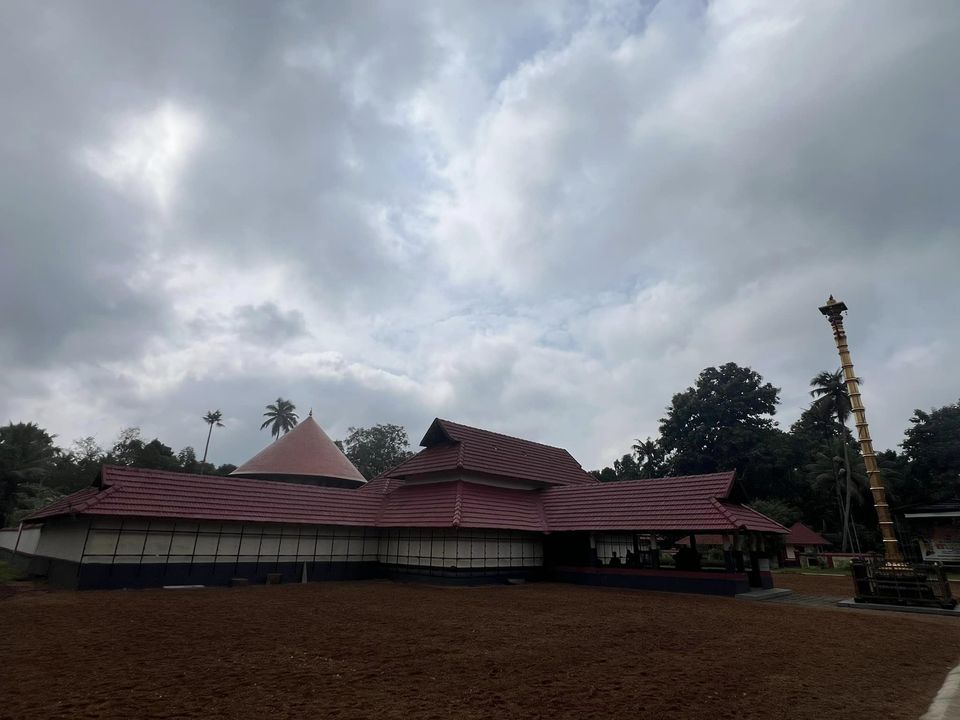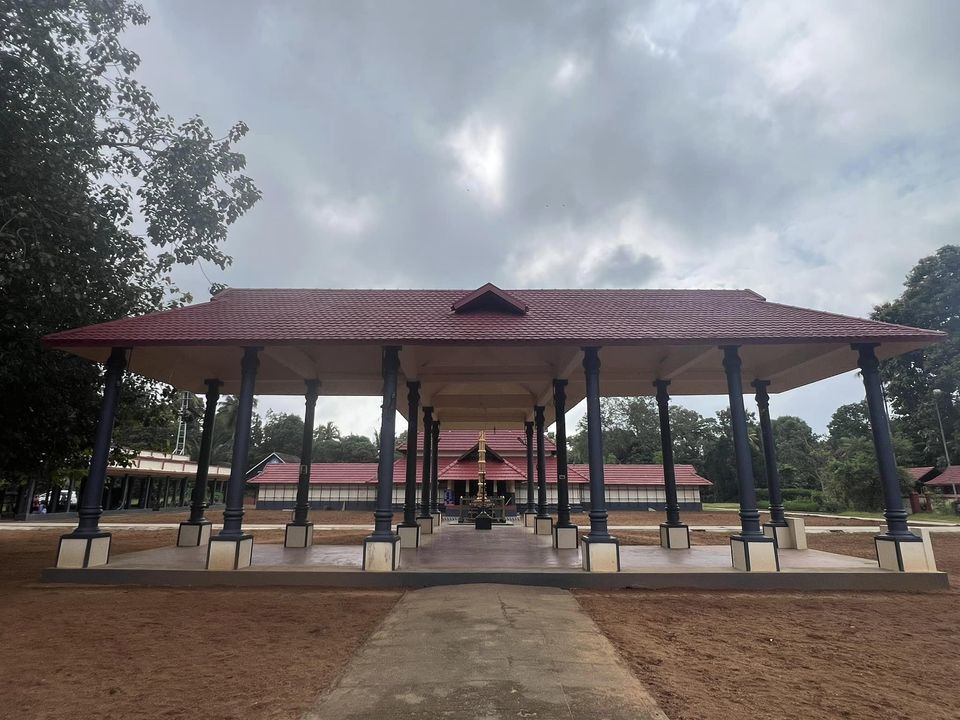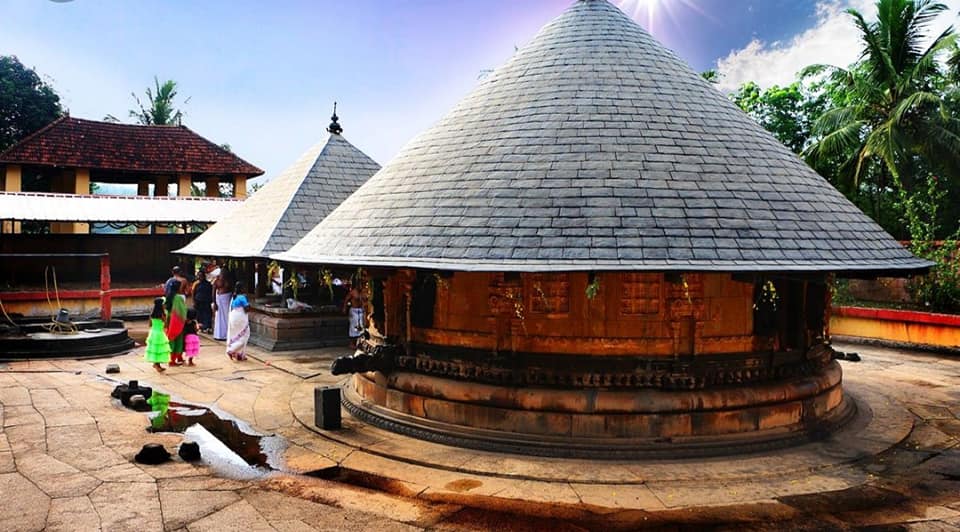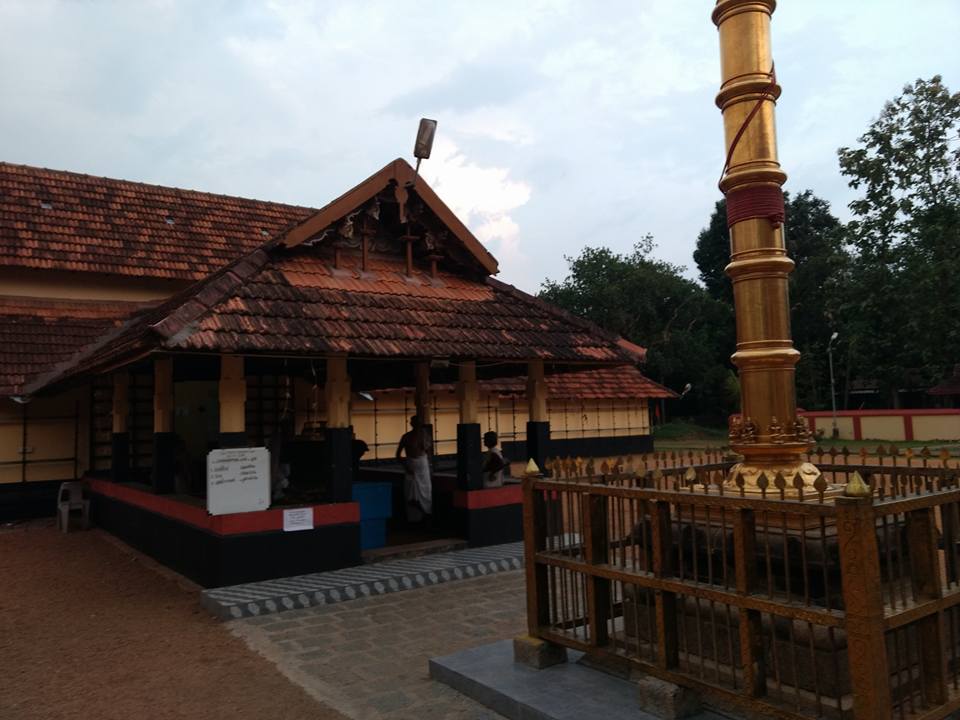Thiruvanvandoor Mahavishnu Temple, situated in Thiruvanvandoor within the Alappuzha District, is a Hindu temple that honors the deity Vishnu.

This site is one of the five ancient shrines located in the Chengannur region of Kerala, associated with the Mahabharata legend. According to tradition, after installing Parikshit as the king of Hastinapura, the Pandava brothers embarked on a pilgrimage.
Upon reaching the banks of the Pamba River, it is said that each brother established a protective image of Krishna:
Yudhishthira at the Thrichittatt Maha Vishnu Temple, Bhima at the Puliyur Mahavishnu Temple, Arjuna at the Aranmula Parthasarathy Temple, Nakula at the Thiruvanvandoor Mahavishnu Temple, and Sahadeva at the Thrikodithanam Mahavishnu Temple. The renowned Pamba River flows close to the temple, which is why the deity is referred to as Paambanaiappan.
Additionally, another legend suggests that the sage Bhrigu consecrated the temple. This temple is recognized as one of the five shrines constructed and revered by the Pandavas from the Mahabharata. The temple showcases the distinctive Kerala style of architecture, prevalent in temples throughout the South Indian state of Kerala, particularly along the eastern axis. It features a two-storey gopuram, or gateway tower, with the upper level adorned with wooden trails that cover the Kottupura, a hall designated for drum performances during festivals.
Surrounding the temple is a rectangular wall known as Kshetra-Madilluka, which is punctuated by gateways that enclose all the temple's shrines. The metal-plated flagpole, or dvajasthambam, is aligned with the temple tower, leading towards the central sanctum, while a Deepastamba serves as the light post. The Chuttuambalam functions as the outer pavilion within the temple's confines. The central shrine, along with its adjoining hall, is situated within a rectangular structure called Nallambalam, which features pillared halls and corridors. Between the entrance of Nallambalam and the sanctum lies a raised square platform known as Namaskara Mandapa, topped with a pyramidal roof.
To the left of Namaskara Mandapa, as one enters, is Thevrapura, the kitchen where offerings for the deity are prepared. Balithara serves as an altar for ritualistic offerings to demi-gods and festive deities. The central shrine, referred to as Sreekovil, contains the image of the presiding deity and is elevated on a platform accessed by a flight of five steps. Flanking the doors are images of guardian deities known as dvarapalakas. According to Kerala rituals, only the main priest, called Thantri, and the second priest, known as Melshanthi, are permitted to enter the Sree Kovil.
The main shrine features a circular design, with a granite base, a laterite superstructure, and a conical roof constructed from terracotta tiles, all supported internally by a wooden framework. The lower section of the Sree Kovil comprises the basement, the pillar or wall known as stambha or bhithi, and the entablature referred to as prasthara, arranged in a height ratio of 1:2:1. The upper section mirrors this division, consisting of the neck called griva, the roof tower known as shikhara, and a conical kalasam made of copper, also in the same ratio. The roof extends in two tiers to shield the inner structure from heavy monsoon rains. Both the temple roof and several pillars are adorned with intricate wood and stucco carvings that illustrate tales from ancient epics, including the Ramayana and Mahabharata. Surrounding the sanctum, the outer walls are framed with wooden structures that hold numerous lamps, which are illuminated during festive celebrations.
Additionally, the temple walls are embellished with paintings that date back to the early 18th century. Tiruvaymoli festival, held annually, honors Nammalvar, the revered saint poet from the 8th century. This 51-day celebration marks the installation of the Sreekrishna idol and culminates in the Gajamela, featuring a procession of 21 beautifully adorned elephants. The event showcases floats that illustrate Puranic stories, accompanied by musicians playing traditional instruments such as Mayuranrithom, Krishnanattom, Karakom, Nadaswarom, Panchavadyam, and Pancharimelom. Additionally, a group of Pancharimelam performers presents their art during the festivities. In the evening, Kathakali artists take the stage, performing various historical narratives.
തിരുവൻവണ്ടൂർ മഹാവിഷ്ണു-ഗോശാലകൃഷ്ണക്ഷേത്രം
തിരുവൻവണ്ടൂർ മഹാവിഷ്ണു-ഗോശാലകൃഷ്ണൻ ക്ഷേത്രം, ഭാരതത്തിലെ 108 വൈഷ്ണവക്ഷേത്രങ്ങളിൽ പ്രധാനപ്പെട്ടതും പഞ്ചപാണ്ഡവ ക്ഷേത്രമായി അറിയപ്പെടുന്ന പുരാതന ക്ഷേത്രങ്ങളിൽ ഒന്നാണ്. ചെങ്ങന്നൂരിൽ നിന്നും തിരുവല്ലയിലേക്ക് പോകുന്ന വഴിയിൽ, നാലു കി.മീ. വടക്കുപടിഞ്ഞാറായി സ്ഥിതിചെയ്യുന്ന ഈ ക്ഷേത്രം 'പാമ്പണയപ്പൻ തിരുപ്പതി' എന്ന പേരിൽ അറിയപ്പെടുന്നു. പടിഞ്ഞാട്ട് ദർശനമുള്ള ചില ക്ഷേത്രങ്ങളിൽ ഒന്നായതിനാൽ, ഈ ക്ഷേത്രത്തിന് പ്രത്യേകതയുണ്ട്.
ഇവിടെ ഗോശാലകൃഷ്ണൻ, കൂടാതെ ഗണപതി, ശാസ്താവ്, ശിവൻ എന്നിവരാണ് ഉപദേവതകൾ. അജ്ഞാത വാസകാലത്ത് പഞ്ചപാണ്ഡവർ ചെങ്ങന്നൂരിന് സമീപമുള്ള പാണ്ഡവൻ പാറ എന്ന കുന്നിൽ താമസിച്ചിരുന്നുവെന്ന് പറയപ്പെടുന്നു. അവിടെ നിന്നു ഓരോരുത്തരും സമീപത്തെ ക്ഷേത്രങ്ങളിൽ ആരാധന നടത്തുകയുണ്ടായിരുന്നുവെന്നാണ് ഐതിഹ്യം. നകുലൻ പൂജിച്ച മഹാവിഷ്ണുവാണ് തിരുവൻവണ്ടൂരപ്പൻ. യുധിഷ്ഠിരൻ തൃച്ചിറ്റാറ്റിൽ, ഭീമൻ തൃപ്പുലിയൂരിലും, അർജ്ജുനൻ തിരുവാറന്മുളയിലും, സഹദേവൻ തൃക്കൊടിത്താനത്തിലും ആരാധനകൾ നടത്തിയതായി വിശ്വസിക്കപ്പെടുന്നു.
കൂടാതെ, മുതുകുളത്തിനടുത്തുള്ള പാണ്ഡവർകാവ് ക്ഷേത്രത്തിൽ കുന്തിയും ആരാധന നടത്തിയിരുന്നുവെന്ന് കരുതപ്പെടുന്നു. ഒരു ദിവസം തന്നെ ഈ ആറു ക്ഷേത്രങ്ങളിൽ ദർശനം നടത്തുന്നത് ഭക്തജനങ്ങൾ പുണ്യമായി കാണുന്നു. ഈ ക്ഷേത്രങ്ങളിൽ പടിഞ്ഞാട്ട് ദർശനമുള്ള ഏകക്ഷേത്രം തിരുവൻവണ്ടൂർ ആണ്, മറ്റ് സ്ഥലങ്ങളിൽ ദർശനം കിഴക്കോട്ടാണ്.ശ്രീവല്ലഭൻ കോതയുടെ വേണാടുഭരിച്ചിരുന്ന രണ്ട് ശിലാശാസനങ്ങൾ ഉണ്ട്. അവയിൽ കാലം വ്യക്തമാക്കിയിട്ടില്ലെങ്കിലും, 10ആം നൂറ്റാണ്ടിന്റെ അവസാനത്തിൽ അദ്ദേഹം ജീവിച്ചിരുന്നുവെന്ന് കരുതപ്പെടുന്നു.
ഭക്തജനങ്ങൾക്ക് ഏറെ ശ്രദ്ധേയമായ നടയാണ് ഗോശാലകൃഷ്ണൻ. 1963-ൽ അവിടെ ഹൈസ്കൂൾ ചിത്രരചനാ അധ്യാപകനും കൃഷ്ണ ഭക്തനുമായ ദാമോദരൻ സ്വാമിക്ക് സ്വപ്നദർശനം ലഭിച്ചതിന്റെ അടിസ്ഥാനത്തിൽ, തിരുവൻവണ്ടൂർ ക്ഷേത്രത്തിനു പിന്നിൽ ഏകദേശം 50 മീറ്റർ അകലെയുള്ള സ്ഥലത്ത് 51 ദിവസത്തെ പരിശ്രമഫലമായി ഗോശാലകൃഷ്ണന്റെ വിഗ്രഹം സ്ഥാപിക്കപ്പെട്ടു. ഇന്നും ആ ഓർമ്മക്കായി 7 സപ്താഹങ്ങൾ (49 ദിവസം) ഉൾക്കൊള്ളുന്ന 51 ദിവസത്തെ ഉത്സവം ഇവിടെ പ്രത്യേകതയായി നിലനിൽക്കുന്നു.
Address:
Temple Road,
Thiruvanvandoor, Kerala 689109



